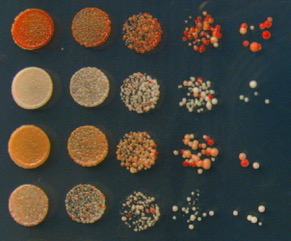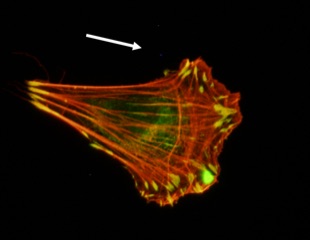Introduction of Research
Studies on the molecular mechanism of the regulation of chromatin structure, which is involved in maintenance and expression of genetic information
Formation and regulation of heterochromatin. DNA, which is the carrier of genetic information, is neatly packaged inside the nucleus. The main factor responsible for this space-effective folding is chromatin, which is the structure consisting of histone proteins and DNA. Various chromatin structures occur within the nucleus, including heterochromatin, which is associated with cell differentiation, senescence, and cancer, as well as in maintenance of chromosomes, or the storage units of DNA. How is heterochromatin formed at the appropriate time and place? How are these maintained? Furthermore, what controls the activities of heterochromatin? Our research aims to answer these questions.
Studies of the molecular mechanism of change and maintenance of cell shape through intracellular contractile apparatus
Myosin II is a protein that plays a central role in cellular motile processes involving shape changes such as cell migration and cytokinesis. Myosin II can change the cell shape by constructing an intracellular contraction apparatus with actin filaments at the required place and time in the cell. Maintaining the altered cell shape is also an important function of myosin II, which is required for each cell to function normally. There are three different isoforms of myosin II in vertebrate cells, but their functional differences are unclear. By investigating their physiological functions, we aim to clarify the molecular mechanism of complex cell shape change and maintenance.
Introduction of laboratory
A variety of reactions comprise the complex networks in a cell, ultimately allowing one cell to live, proliferate, and differentiate. We are interested in two phenomena: control of gene function and and control of cell morphology and motility. Within these phenomena, we focus on key factors or structures, and conduct detailed research studies using methods from genetics, biochemistry, molecular biology, and cell biology. Even if the themes are different, the foundational framework and methods are shared and research is conducted by reciprocal discussions and stimuli.


